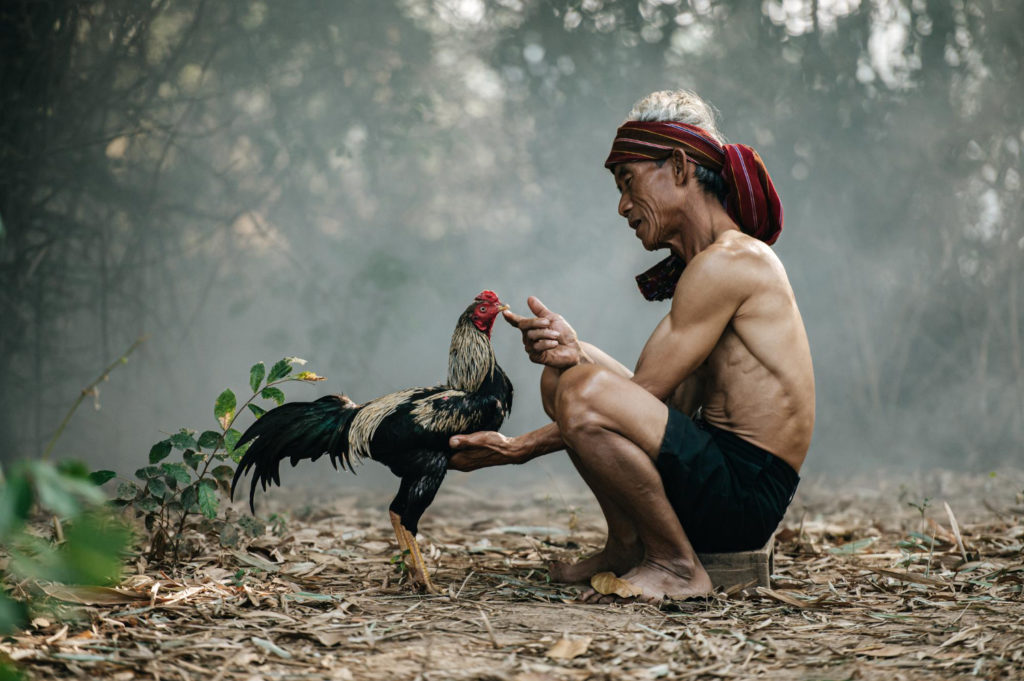Environment

The sum of all the interacting living things (material and non-material) and non-living elements and how they affect human life’s growth, health, progress, and meaning.
Story: Powerplay over a Powerline
Kent: I understand your concerns, Chief Wamalwa, but we assure you that we will take every precaution to minimize any impact on the land.
Chief Wamalwa: You don’t understand. Our land is sacred to us. It is a part of our identity, our heritage. We cannot allow it to be desecrated by your powerline.
Kent: Chief, this powerline is vital for the region’s development. It will bring electricity to thousands of people, improving their lives and livelihoods.
Chief: We do not need your powerline to improve our lives. Our connection to the land is what sustains us. We cannot sacrifice that for the sake of so-called development.
Kent: I understand your attachment to the land, but you must also consider the wider community’s needs. The benefits of this project will far outweigh any perceived harm to your traditions.
Chief: We are not separate from the land; we are the land!
Kent: We have a fundamental difference in perspective, Chief. But I hope we can find a way to work together and come to a mutually beneficial solution.
Chief: I appreciate your willingness to find a solution, but I cannot compromise. Our land and identity are not up for negotiation.

Examples from the Bible
- Abraham did not want to bury his wife on foreign soil but insisted on buying the land (Genesis 23).
- Jacob and Joseph wanted to be buried with their fathers in their land (Genesis 47:30, 49:29-50:26, Exodus 13:19, Joshua 24:32).
- Israel’s moral purity and the promised land were interrelated (Numbers 35:33-34).
- Cleanliness (hygiene) and ritual purity go hand in hand. Israel’s camp was not to be defiled by corpses (Deuteronomy 21:23) or excrements (Deuteronomy 23:12-14).
- Israel’s law ensured that land must remain in the family name and could not be sold permanently (Leviticus 25:23, Numbers 27:8-11).
- Abel’s blood cried to God from the ground (Genesis 4:10).
- The Medium of En-dor SAW Samuel and rebuked Saul for making her call him from the realm of the dead (1 Samuel 28).
- Jesus tells the woman at the well that it’s not about a place or time but true worshipers worship in truth and spirit (John 4:21-24).
- Elisha had to pray for God to show his servant the unseen realities (fire chariots) that protected and defended them in the Aramean assault on the Northern Kingdom (2 Kings 6:8-23).
- For Daniel, the vision of the angels and powers was a reality in the invisible world (Daniel 10).
- Angel told Joseph to go to Egypt in a dream, and he immediately went with his family (Matthew 2:13-23).
- During Jesus’ transfiguration, Moses and Elijah stood there talking with Jesus. Peter and John wanted to build a shrine/memorial (Matthew 17:1-13).
- The sick were placed so Peter’s shadow would heal them (Acts 5:15).
- People used handkerchiefs that touched Paul to heal people and expel demons (Acts 19:11-12).
Real-life examples
- The Atti People of the Philippines lost their island to unethical corporate resort developers. After legal advocates exposed their scheme, they offered to give them another island. The Atti declined. Their ancestors gave them THIS land. Generations were buried there. They are part of the land. It is more than sand, rock, and dirt available to the highest bidder or most cunning schemers. “We ARE the land, and you stole it from us.”
- “The garden magician, according to native ideas, thus controls both the work of man and the forces of Nature. He also acts directly as supervisor of gardening, and sees to it that people do not skimp their work, or lag behind with it”.1 The Maguindanaon in the Philippines also have the “Apo na Palay.” He used magic (that is mixed with Islamic beliefs) and agricultural expertise to guide the rice farmers through the planting season. He is the one communicating with the unseen world and, simultaneously, the one who knows about the best times for planting.2
Relevance

It makes a difference in how we see and relate to the land, plants, physical elements, and spiritual and spatial dimensions. We must account for as much as possible of those things that make us human and help us live in harmony tied to the land, plants/agriculture, mountains, forests, lakes, etc. Ecology is the study of how all these work together.
For many animistic cultures, people believe that an invisible but real counterpart (twin) exists for everything in the seen world. Dreams are one way they interact with this non-material reality. The term “dream ego” describes this invisible twin of oneself. Understanding that both worlds are real to these people and mutually influence each other is essential.3
Many in the West discard any notion or reality of unseen beings – the spiritual world. There may be a “heaven and hell” out there as “unseen,” but the concept of beings that we simply cannot see around us is excluded. Demons, angels, and even “God” are seen as ways humans try to explain their unexplainable worlds. However, most people live in daily belief and interaction with those unseen beings and know they are a genuine and present part of human life.
Stories of mythical beings often tell the story of a people group. These beings are often heroes of the past but play in the real world (mountains, rivers) of these people. The genesis of a group is not seldom told in such a mythology.
Orality preference continuum
The two poles of this continuum can be seen in how people value land and how the unseen world is perceived.
People from HOR cultures tend to identify with the land; for them, the unseen world is a reality that must be dealt with in everyday life.
LOR people, on the other hand, see land more as a commodity. They also tend to separate the unseen from the seen world (dichotomy).
Most people can be found somewhere between these two poles of the spectrum.
| Very high | High | Low | Very low |
|---|---|---|---|
| We are the Land. We interact at all levels with the land. It is sacred. | We interact on some levels with the land. We must be careful to at least respect its sanctity. | The land affects our life movements, and we manage it as well as we can. | We are separate from the land and simply use it. It is simply the material world. |
| Our living space is tied to our identity. | Most of us live in our living space, but some get blessed to go elsewhere. | We live in the space that best suits our needs and must inform others of living off-site. | We live in whatever space suits our household needs. |
| A deeper meaning is attached to all things. There is something attached phenomenally to all things. | Only special things have a deeper meaning attached to them. Generally associated with someone or some entity with significant previous influence. | Some spaces may have more meaning and phenomena attached. As an extreme, a house or specific place might be “haunted.” | Material things are simple material things. They have no unique tie or meaning in this world. The phenomena can be sufficiently “explained away.” |
| Living space is shared among the seen and unseen world. That which is unseen has ultimate power. We must always respect it. | Living space is shared among the seen and unseen world. That which is unseen has power. We should respect it to the best of our ability and lifestyle. | That which shares our living space from unseen dimensions has no direct relationship to what we see or power to influence us. | People may or may not believe in a non-material world. If they believe in it, both worlds have a clear separation. |
What has been discovered?
Paul Hiebert coined “The Flaw of the Excluded Middle,”4 highlighting most Western Christians’ belief in God in heaven and our physical world environment. But many live in complete denial of the realities and activity around us in a non-visible part of our environment. The angelic and demonic realities are minimalized in daily activity. People’s connectedness and the physical environment get minimized despite clear Biblical revelation (blood on the ground, “infected” places of idol worship needing cleansing, etc.).
Anthropologist Mary Douglas discovered that moral/ritual purity and hygiene are intertwined for many people.5
The conversion/transformation of people into the Kingdom of God requires addressing animistic beliefs and practices using high orality-reliant approaches.6 Syncretism challenges all worldviews (not just animism), and antidotes come through appropriate communication principles and methods among those peoples.
Animistic cultures understand the direct relationship between all seen and unseen realities that control or influence the world around them.7
The Western world fractured the environment dichotomizing the material and nonmaterial world. “A second answer was the Enlightenment separation between ‘natural’ and ‘supernatural’ realities. This gave rise to sciences that studied this world and gave naturalistic explanations that had no place for God. It also relegated religions to beliefs in the supernatural heavenly realities believed to be rooted in faith, not facts.”8
Mana or Baraka: Blessing attached to objects – stone from a holy place has power, power to heal attached to relics. Saul’s army carried the Ark of the Covenant into battle.9
The superstructure of a culture (Worldview) develops from its Social Structure (Social Organization) that stands on its Infrastructure (Economy). All mutually influence each other and are influenced by the Environment from which they developed.10

Additional resources
- Discover more about Environment through our training materials at Orality.Academy!
- We Are The Land: The Struggle Between Renewable Energy and Indigenous Values.
- Paul G. Hiebert, “The Flaw of the Excluded Middle,” Missiology: An International Review 10, no. 1 (1982): 35–47.
- Bronislaw Malinowski, Argonauts of the Western Pacific: An Account of Native Enterprise and Adventure in the Archipelagoes of Melanesian New Guinea (London: Routledge, 2002), 46. ↩︎
- Norolayn Said, “Maguindanaon Rice Farming” (Maraue, 2017), https://www.slideshare.net/norolaynsaid/maguindanaon-rice-farming. ↩︎
- Paul G. Hiebert, R. Daniel Shaw, and Tite Tiénou, Understanding Folk Religion: A Christian Response to Popular Beliefs and Practices (Grand Rapids, MI: Baker Academic, 1999)
Lothar Käser, Animism: A Cognitive Approach, trans. Derek Cheeseman (Nürnberg: VTR Publ, 2014). ↩︎ - Hiebert, Paul G. “The flaw of the excluded middle.” Perspectives on the World Christian Movement (1999): 414-421. Hiebert, P. G. (1982). The Flaw of the Excluded Middle. Missiology, 10(1), 35–47. https://doi.org/10.1177/009182968201000103. ↩︎
- Douglas, Mary. 2005. Purity and Danger: An Analysis of Concept of Pollution and Taboo. Routledge Classics. London ; New York: Routledge. https://monoskop.org/images/7/7d/Douglas_Mary_Purity_and_Danger_An_Analysis_of_Concepts_of_Pollution_and_Taboo_2001.pdf.
↩︎ - Angeles, Jay and Danyal Qalb “Deterring Syncretism: The Use of Orality to Close the Gap between Formal and Folk Religion.” Journal of Asian Mission 23, no. 2 (2022): 39–63. ↩︎
- Werner, Eberhard. “Orality and Folklore: Reflections on the Folktale Tradition of the Zaza People.” In Kurdish Art and Identity, pp. 169-190. De Gruyter, 2020. ↩︎
- Hiebert, Paul G., and R. Daniel Shaw. Understanding folk religion: A Christian response to popular beliefs and practices. Baker Books, 2000. ↩︎
- Hiebert, Paul G., and R. Daniel Shaw. Understanding folk religion: A Christian response to popular beliefs and practices. Baker Books, 2000. ↩︎
- Wesch, Michael. The Art of Being Human, Ch. 2, https://anth101.com/book/. ↩︎
